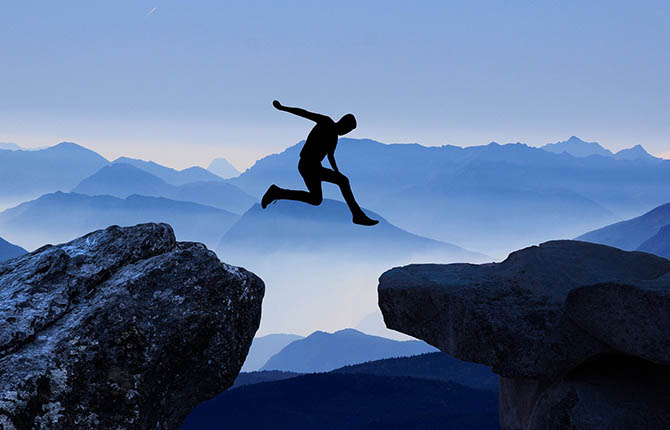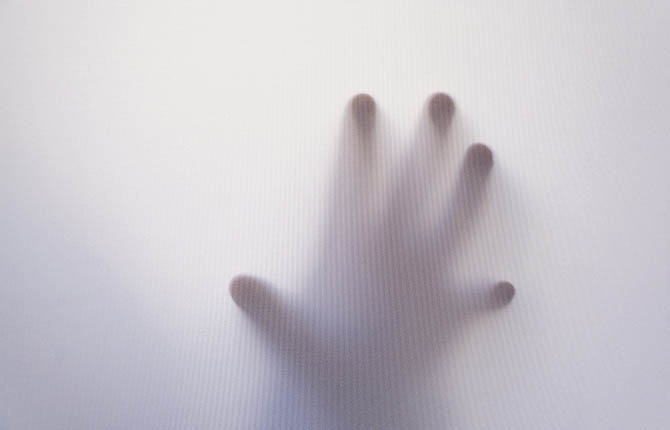If you’re reading this, chances are you’re no stranger to the overwhelming and paralyzing feelings that anxiety can bring. Whether it’s a racing heart, shallow breathing, or an inability to focus, anxiety can make it difficult to function on a daily basis. You’re not alone. Millions of people worldwide suffer from anxiety, and many have found relief through grounding techniques.
Grounding strategies for anxiety involve techniques that help you stay present in the moment, rather than getting lost in anxious thoughts or feelings. Practicing grounding can help you feel more calm and centered as you navigate through difficult situations.
In this post, we’ll explore some simple and effective grounding exercises for mental health that you can practice anytime, anywhere or incorporate into your daily routine. You’ll learn simple coping tools for anxiety and discover how to ground yourself during emotional turbulence, even when you’re feeling overwhelmed.
What is Grounding and Why It Works for Anxiety?
Grounding is a technique that involves focusing on the present moment and on your body and physical sensations, rather than getting caught up in anxious thoughts or emotions. When we’re anxious or stressed, our minds tend to race and focus on worries and fears and our thoughts can become scattered, making it difficult to feel centered and in control. Anxiety is often caused by worrying about the future or ruminating on past events, and by bringing your attention back to the present moment and reconnecting with your body, you can reduce feelings of anxiety and stress.
Research has shown that grounding techniques, including mindfulness-based interventions, can effectively improve mental, physical, and social health conditions such as anxiety, depression, addiction, and pain. Mindfulness practices, which are a type of grounding tool, have been found to reduce stress and anxiety symptoms, cope with Post-traumatic Stress Disorder (PTSD) symptoms, and improve cognitive function.
So, why does grounding work for anxiety? One reason is that it helps to regulate the body’s stress response by activating the parasympathetic nervous system. When we’re anxious, our body goes into “fight or flight” mode, releasing stress hormones like cortisol and adrenaline. This can lead to physical symptoms like a racing heart, sweating, and shallow breathing. Grounding techniques, such as sensory grounding, mindfulness meditation, deep breathing or progressive muscle relaxation, can help to slow down the body’s stress response, reducing these physical symptoms and promoting a sense of calm.

Best Grounding Techniques for Stress and Anxiety
When it comes to grounding techniques for anxiety, there are several effective strategies that you can use to help alleviate symptoms and feel more centered. Here are some of the most helpful grounding techniques to try when you experience anxiety:
Deep Mindful Breathing
Mindful breathing is a simple and effective way to ground yourself during anxiety. Take a few deep breaths, focusing on the sensation of the air moving in and out of your body. Then, allow your breath to return to its natural rhythm. If your mind wanders, gently bring your attention back to your breath. Repeat this exercise for a few minutes, or as long as you need to feel calm and centered.
You can also practice various controlled breathing techniques to calm your mind, reduce anxiety and stress, and improve your overall well-being.
Engaging Your Senses
Engaging your senses is a powerful way to ground, connect with your physical surroundings, calm your mind and relieve anxiety. Here are some ways to use our senses to help us move through distress.
Touch: Put your hands in water, hold a piece of ice, pick up or touch items near you. You can hold or touch an object that brings you comfort and grounding, such as a stone, a piece of jewelry, or a stress ball. By focusing on the sensation of the object in your hand, you can bring your mind into the present moment and calm your thoughts.
Sight: Mindfully notice your surroundings. Look for something in the environment that catches your attention and mentally describe it in detail. Notice colors, shapes, textures, and patterns.
Sound: Pay attention to the sounds around you. Listen to the ambient noises and try to identify them. Focus on the rhythm, pitch, and tempo of the sounds. You can also listen to calming music or nature sounds. Put on your favorite playlist and focus on the music. Another option is to try humming or singing to yourself.
Smell: Savor a scent. Take a few deep breaths and focus on the smell. Identify the different scents and how they interact with each other. You can find a scent that is comforting and pleasant for you, such as an essential oil that you can carry with you and use whenever you need to ground yourself. Take a few deep breaths and try to focus on the scent. You can also try savoring a favorite smell, such as the smell of freshly baked cookies or a loved one’s perfume.
Taste: Savor a food or drink. Take small bites or sips and focus on the flavors and textures of what you’re eating. Notice how the taste changes as you chew or drink.
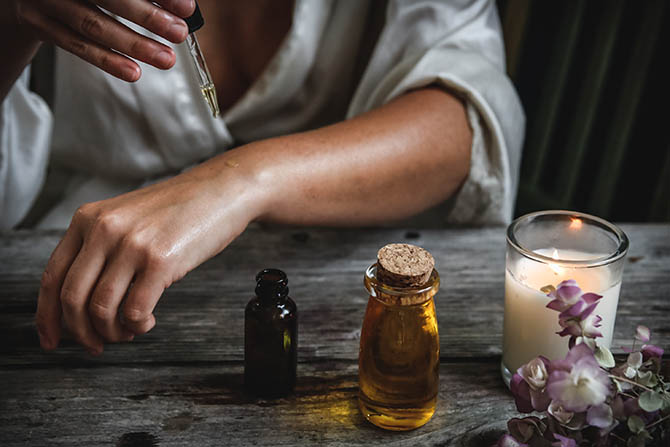
We’re all different, and what works for one person might not work for another. So, try experimenting with different techniques and find what works best for you. Don’t be afraid to mix and match these techniques to suit your needs. The key is to engage your senses and bring your attention to the present moment, which can help you feel more grounded and less anxious or panicky.
One of the most popular sensory grounding techniques that you can do anywhere and anytime is the 5-4-3-2-1 exercise. Here’s how it works:
The 5-4-3-2-1 Exercise for Anxiety
- Look around and name 5 things you can see.
- Identify 4 things you can touch.
- Notice 3 things you can hear.
- Identify 2 things you can smell.
- Notice 1 thing you can taste.
This anxiety exercise can help to shift your focus away from anxious thoughts and into the present moment and the physical sensations in your body. This helps reduce anxiety and gives you a sense of control.
Progressive Muscle Relaxation
Progressive muscle relaxation involves tensing and relaxing different muscle groups in your body to release tension and promote relaxation. Start by tensing the muscles in your toes, then slowly work your way up your body, tensing and relaxing each muscle group in turn. This technique can be especially helpful for managing physical symptoms of anxiety.
Grounding through Movement

Movement can be a powerful way to ground yourself during anxiety. Try going for a walk, doing some gentle yoga poses, stretching your body, or engaging in any other physical activity that you enjoy. As you move, focus on the sensations in your body, and try to stay present in the moment.
Listen to your wise body. Maybe you feel like jumping or shaking your body. Or maybe you can try to dance through your intense emotions. Allow yourself to move freely! This can help you release any tension or stress that you’re holding onto and leave you feeling more relaxed . Plus, when you get moving, your body starts releasing endorphins, which are the body’s natural feel-good chemicals. So, moving can not only help you release tension and stress, but also improve your mood and provide a sense of emotional relief.
Don’t worry about looking silly or getting your movements right. The point is to let go of control and tune into your body’s needs. So, let the music move you and see where it takes you. By listening to your body and allowing it to move in whatever way feels natural, you can release stress, relieve tension, reduce anxiety, and bring yourself back to a calmer state of mind.
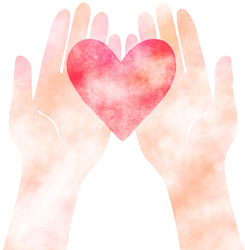
Body Scan for Anxiety Coping
A body scan is a mindfulness practice that involves bringing awareness to the sensations in your body, helping to release stress and tension and promote relaxation. Anxiety can cause both physical tension and scattered thoughts, making it difficult to relax. Practicing a body scan is a great way to counteract these effects, helping you become more present in the moment and calm your thoughts.
To begin, find a comfortable position either sitting or lying down. Close your eyes and bring your attention to your breath. As you deeply inhale and slowly exhale, gradually scan your body, paying attention to each part and any sensations you may feel. You can start from head to toe or vice versa, depending on what feels most comfortable for you. Tune into your body and notice any areas of physical tension that may be caused or exacerbated by anxiety. As you bring awareness to each part of your body, you may notice areas that are holding tension, such as your jaw or shoulders. Allow yourself to fully feel and acknowledge these sensations without judgment or criticism. You might also notice how the tension is being released as you exhale. Do this for several minutes, or as long as feels comfortable.
The body scan can be a powerful tool for managing anxiety and stress. By bringing awareness to your body, you can ground yourself in the present moment and promote a sense of calm. With regular practice, you may find that your body becomes more relaxed and your mind becomes more at ease.
Ground Yourself with a Mindful Sensory Walk
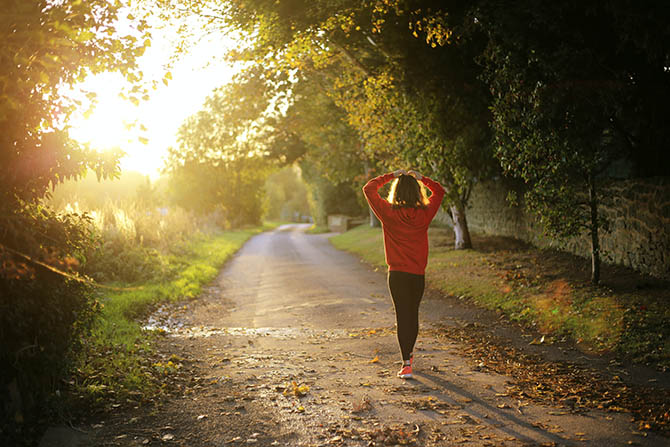
A sensory walk is a natural grounding technique that can be a helpful tool for coping with anxiety. This mindfulness exercise involves walking outside and focusing on your surroundings, engaging all of your senses. As you walk, pay attention to the sights, sounds, smells, and sensations around you. Notice the colors of the leaves on the trees, the sounds of birds chirping, the smell of freshly cut grass, and the feeling of the sun on your skin. Engage with your environment and try to stay present in the moment. This practice can help you feel more grounded and connected to the world around you, reducing feelings of anxiety and stress.
The sensory walk is a great example of mindfulness for anxiety and a natural way to promote relaxation and reduce tension. This technique can be particularly helpful for those who find it difficult to sit still during meditation or other mindfulness practices. Give it a try and see how it works for you!
Visualization

Visualization is a technique where you use your imagination to create a mental image of a peaceful place or situation and allow yourself to fully immerse in it. You can use this technique to calm your mind, relax your body and reduce anxiety by picturing yourself in a soothing environment. For example, you can visualize yourself on a beach, in a garden or a forest, or any other place that makes you feel calm and relaxed.
To ground yourself using visualization, take a moment to close your eyes and picture yourself in a peaceful setting. Focus on the details of the environment, such as the colors, sounds, and sensations. Imagine yourself fully immersed in this scene, breathing in the fresh air, feeling the warmth of the sun on your skin, or hearing the gentle waves of the ocean. By focusing on this calming image, you can help bring yourself back to the present moment and reduce feelings of anxiety.
Visualization can also be helpful in preparing for stressful situations, such as public speaking or a job interview. By visualizing yourself feeling calm and successfully going through this uncomfortable experience, you can help reduce the anxiety you may feel when the time comes.
Remember, visualization is a personal technique, and what works for one person may not work for another. Try different scenarios and settings to find what works best for you.
Managing Anxiety: Incorporating Grounding and Mindfulness Techniques into Your Coping Toolbox

These are just a few of the many grounding and mindfulness techniques that you can use to manage anxiety. We are all different, so try experimenting with different techniques and see what feels most helpful and soothing for your body and mind.
These techniques can be great tools to have in your coping toolbox, helping you manage anxiety as you’re experiencing it. But they can also be beneficial when incorporated into your routine and practiced regularly. By doing so, you can build resilience and cultivate a greater sense of calm and well-being.
However, if you’re dealing with long-term anxiety or chronic stress, coping tools may not be enough. It’s important to address the underlying causes and explore your emotions, learning to process them in healthy ways. Consider seeking professional help if you feel that you can’t cope on your own. It’s a brave step that can be life-changing.
There are also helpful resources, like the Myselfland app, that can guide you on the journey of increasing emotional awareness and navigating anxiety and stress.
Above all, be patient and gentle with yourself. It’s okay if your anxiety doesn’t disappear right away. Don’t rush yourself, and don’t try to fight or get rid of your stress. Instead, support yourself as you go through this discomfort. Mindfully observe your experience without judgment, reconnect with your body, and learn to handle your anxiety instead of freaking out and trying to run away from it. You’ve got this!



